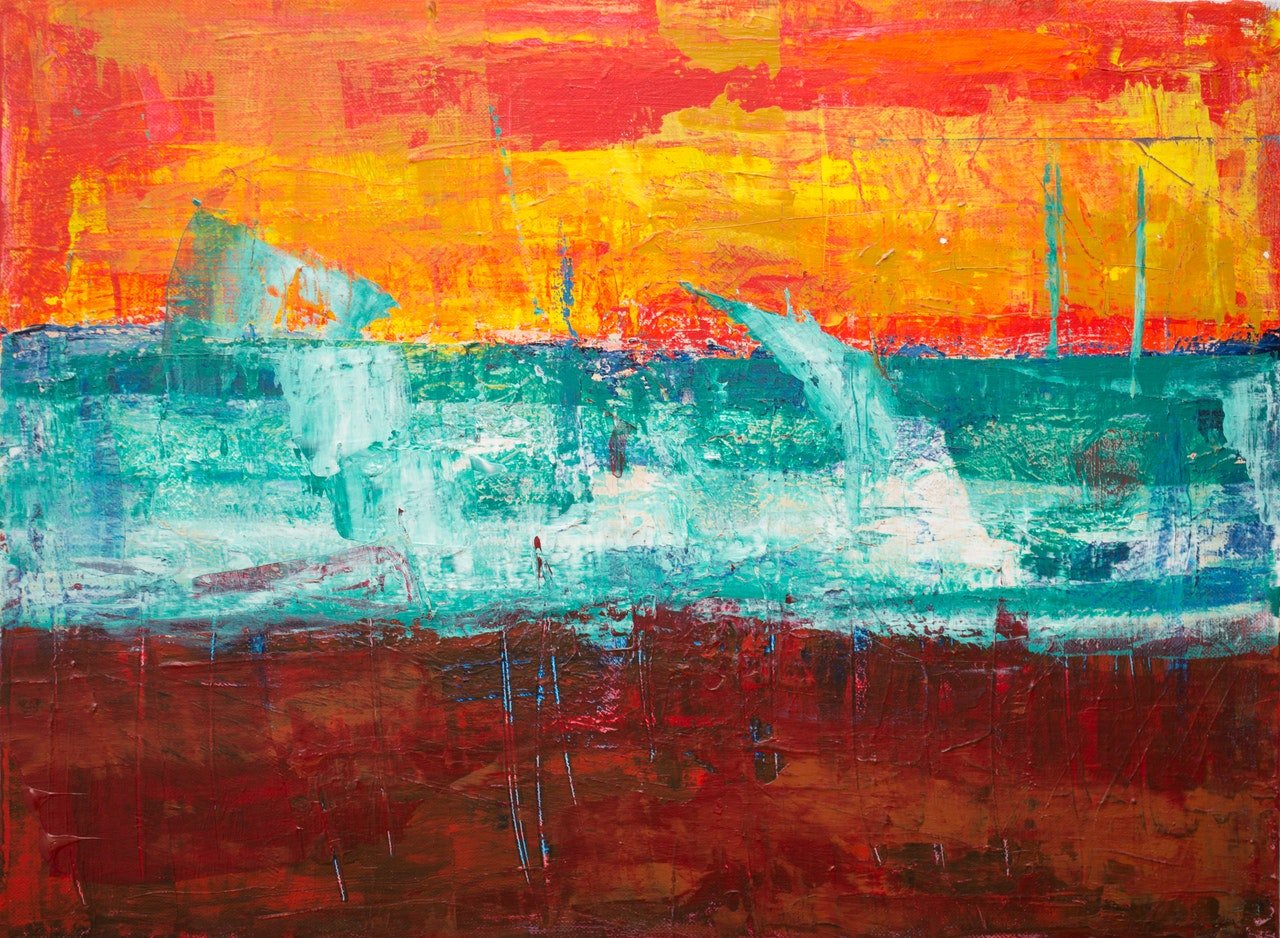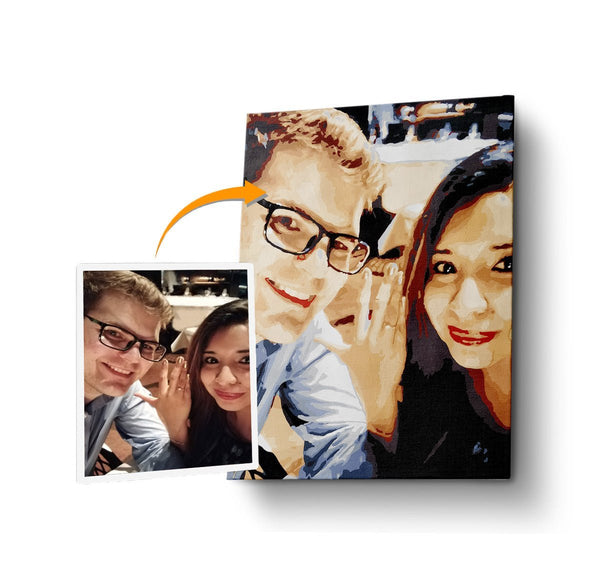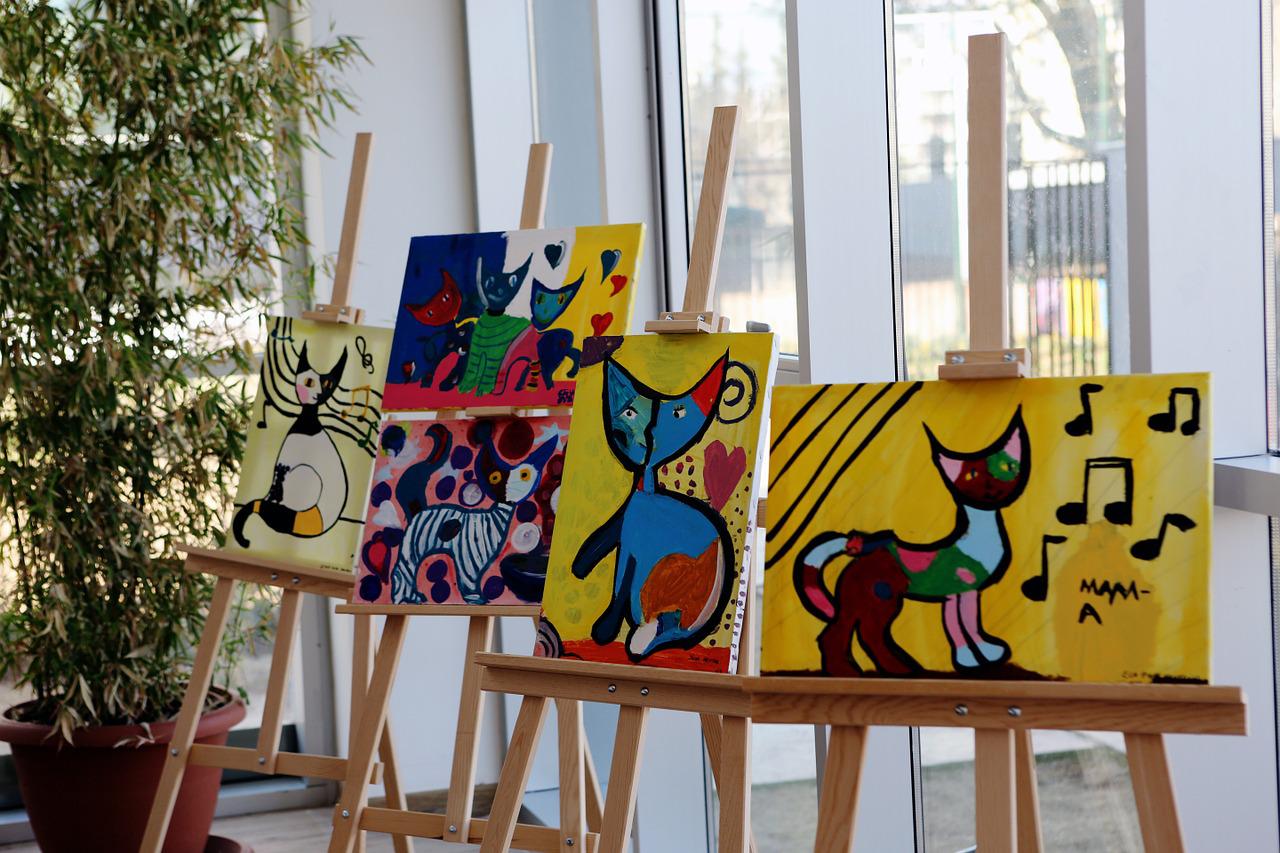
Mark Rothko and the Beauty of Color Field Paintings
Color Field Painting is a subgenre of Abstract Expressionism that differs from the more common art styles of gestural abstract art and action painting. Mark Rothko, Barnett Newman, and Clyfford Still pioneered it in the late 1940s, when they were all looking for a form of abstract painting that might give a contemporary, mythological art and communicate a longing for enlightenment and the limitless.
In the decades that followed, color field painting became a prominent trend, inspiring a wave of young painters all around the world. Color field painting, which deviated from gestural abstraction, became an important source of ideas for painters who were more concerned with the vividness of color, irrespective of the impression of shapes or lines.
We recently explored the rebirth of abstract expressionism in creative practice and its significant resurgence in the worldwide art world, and this progeny of abstract art should not be forgotten. Color field painting is still alive and well today, with many modern artists following in the footsteps of their forefathers, expanding on a base that detractors disregarded decades ago.
Even though Color Field Paintings were pioneered by the three artists mentioned above, Mark Rothko became the artist most associated with this style. Mark Rothko's name is connected with delicate paintings that include combinations of rectangular panes in vibrant colors. The artist was an accomplished colorist.
The most enjoyable aspect of seeing his artworks is observing how the colors, forms, and backdrops interplay with each other, especially at the boundaries. The gentle, brushy borders that encircle his color fields evoke one feeling, while the central forms' stronger, clearer lines suggest another.
Alternative expressions of similar or dissimilar hues generate a range of emotional states, such as deep blue against dark purple or brilliant red against brown. Rothko discovered unlimited variety by using a signature framework. Learn more about Mark Rothko, the featured artist of the week, and his masterpieces. Plus, we will also teach you how to recreate a signature Rothko art style!
All these and more shall be unveiled in today’s article. Keep on reading to learn more!

The general concept of abstract expressionism is that the final image would be composed of lines, colors, shapes, and textures to convey a message. But, what if abstract art only emphasizes one element, which is color. Would it still be possible to evoke thoughts and emotions? Well, this type of art style will make you emotional, mystified, and possibly see the infinite. Color Field Painting arose from the late 1940s efforts of various artists to create a new, legendary art form.
They wanted a new approach that would exclude any hint of depiction to interact with the underlying emotions trapped in old stories rather than the symbols directly. Color Field Painting was a significant step forward in abstract art because it was the first style to eliminate the appearance of a shape or substance showing out against a background. Instead, figure and ground merge, and the image's composition imagined as a field, appears to extend beyond the canvas's limits.
Who is Mark Rothko?
The general concept of abstract expressionism is that the final image would be composed of lines, colors, shapes, and textures to convey a message. But, what if abstract art only emphasizes one element, which is color. Would it still be possible to evoke thoughts and emotions? Well, this type of art style will make you emotional, mystified, and possibly see the infinite. Color Field Painting arose from the late 1940s efforts of various artists to create a new, legendary art form.
They wanted a new approach that would exclude any hint of depiction to interact with the underlying emotions trapped in old stories rather than the symbols directly. Color Field Painting was a significant step forward in abstract art because it was the first style to eliminate the appearance of a shape or substance showing out against a background. Instead, figure and ground merge, and the image's composition imagined as a field, appears to extend beyond the canvas's limits.
Rothko's art was deeply loaded with emotional weight, which he expressed via a variety of forms ranging from representational to abstract. Early figurative work by Rothko, encompassing sceneries, still lifes, figure studies, and portraits, revealed his capacity to integrate Expressionism with Surrealism. His hunt for new ways to express himself led to the creation of his Color Field paintings, which used shimmering color to create a feeling of transcendence.

The painting was Rothko's life, and while he did not receive the recognition he believed his art merited during his life, his popularity has grown considerably in the years after his death. Despite conflicting with the Abstract Expressionists' more strictly disciplined painters, Rothko investigated the expressive power of color and shape on the human mind.
To be in the company of a Rothko is to be in the sight of the pulsating brilliance of his huge paintings; to experience, if only for a few minutes, something of the magnificent mysticism he tirelessly attempted to inspire. This is his legacy that his children continue to preserve.
How to Create Your Own Color Field Painting
Color Field explores the intensity caused by intersecting and overlapping flat color patches. These color patches might be blurry or geometrical. Compared to other styles of abstract art like action painting, this style is subtler and more intellectual than chaotic.
Color Field Paintings are frequently large paintings. When you go near the canvas, the color combinations spread across your field of vision. These enormous rectangles allow your mind and vision to jump directly into the vastness of the colors, making you feel like you can sense the hues. This description is something that you should strive for when attempting to paint a color field artwork. Here are some tips when creating this style:
1. Carefully select a color palette:
A color-field painting can be done with any color scheme, however, some will work better than others. Colors that are analogous or similar, for example, will complement each other rather than clash. Transparent colors, rather than opaque colors, allow for more color depth from numerous layers. You must also determine what color you will use for the underpainting. This first color layer will have an impact on all following layers.

2. Paint on a large canvas and work quickly:
Using a large canvas in this art style is common since it amplifies the aesthetic appeal. If you want to prevent harsh lines where you don't want them, you'll need to cover a lot of canvas, before the paint dries, as quickly as possible. To prevent having to stop, make sure you have enough paint at hand before you begin.

3. Glazing is key:
Instead of chunks of plain, monolithic, opaque, boring color with sharp corners, search for expanses or fields of color that resonate, have depth, expose more the more you look, and flow in space. Glazing is the key to creating layers of color. The key to excellent glazing is perseverance in allowing layers to dry and translucent colors to dry. Check the paint label or do a test if you're not sure what you'll need. If you're working with oils and becoming frustrated while waiting for a coat to dry, work on many paintings at once, switching between canvases.

4. Thin your paint consistency:
Other than glazing for luminance and transparency, Mark Rothko had his method of painting color field artworks: thinning his paint. Accordingly, he applied a small coat of binder with colors onto the unwashed, unprimed canvas.
He next applied oils to the base, allowing them to seep around the painting's frameless edges. Rothko then placed overlapping color combinations on top of them. These concoctions were heavily tinned. This is why their coloring hardly stuck to the image's surface. His paintings gained transparency and brilliance as a result of the technique. And that’s his secret: thinning, glazing, and layering.
We hope these tips on how to create your own color field artwork helps you feel like you’re Mark Rothko.





